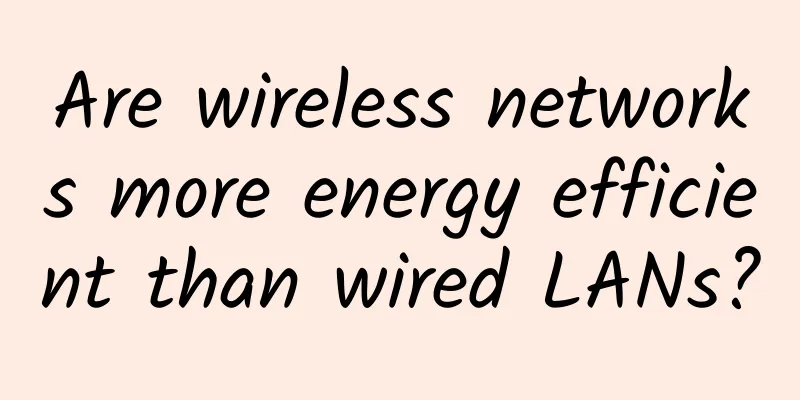Practical example: Why is the VPN file transfer speed only 20M? My corporate headquarters-branch has a 100M dedicated line!

BackgroundThe client company is a clothing retail unit with about 300 employees, with its headquarters in Shenzhen and its branch in Haikou. In order to connect the intranet between the headquarters and the branch, the company purchased a 100M enterprise dedicated line and built an IPSEC VPN on a J router at the export to connect the intranets at both ends. The general topology is shown in the figure below: (1) Typical topology (2) Current issues The speed of copying files between the main and branch offices is only 20Mbps, which is not enough to meet the bandwidth of the dedicated line of 100M. However, after consulting a certain J router manufacturer, the IPSEC VPN throughput capacity can reach 200Mbps, so there is no equipment bottleneck problem. Troubleshooting AnalysisStep 1: Confirm the problem The speed at which the headquarters PC1 pulls files from the branch PC2 via FTP or SMB2: The file copy is indeed around 20M, which is not enough for the 100M dedicated line. The next step is to see if it is a problem with the PC itself, that is, to test the intranet copy on both sides. Step 2: Confirm whether the intranet transmission between the master and the branch is normal The total-part local area network copy situation is as follows: It can be seen that the FTP or SMB2 copy in the Gigabit LAN of the headquarters and branches can reach Gigabit, and the PCs at both ends confirm that there is no problem. But what I want to say is that there is a fundamental difference between running traffic in the LAN and running traffic across IPSEC:
The flow running problem of CPU forwarding is generally related to the number of sessions. The higher the number of sessions, the higher the total throughput that can be run, because the session flow will be processed by multiple threads based on different CPU cores. Hardware forwarding is high-speed forwarding, and the overall throughput can be increased without multiple sessions. The next step is to look at the number of SMB2 flow sessions. Step 3: Confirm the data stream of SMB2 file copy Capture the total-point file flow through the VPN tunnel and analyze the number of sessions: It can be seen that there is only one session flow in the file copy. Since the IPSEC tunnel is encapsulated by the egress router and then forwarded by the CPU, the throughput cannot be achieved if the number of sessions is too small. The next step is to run the IPerf3 flow test. Step 4: IPerf3 multi-session flow test The topology is still total-split into two PCs, one end is used as the IPerf3 server and the other end is the client, and the TCP flow test between them is as follows:
It can be seen that when 10 TCP flows are running simultaneously, the full 100M dedicated line bandwidth can be utilized. Summary and solutions(1) The summary is as follows Since there is only one session for total-to-sub-copy files, the low forwarding throughput through the IPSEC VPN tunnel is in line with expectations. Running multiple session streams simultaneously will hit a higher performance bottleneck. (2) Solution There is no need to solve the problem. If you want to fully utilize the dedicated line bandwidth, multiple PCs can transfer files simultaneously. One-to-one is not enough. |
>>: 12 CMD command tools in Windows that network engineers must master!
Recommend
Wi-Fi chip supply shortage will not be significantly alleviated, and the release of 28nm new production capacity may become the key
According to Electronic Times, industry sources r...
Deployment of the next generation ultra-broadband access network in the 5G era
In the 5G era, the demand for ultra-broadband acc...
edgeNAT Double Holiday Promotion: VPS special price starting from 199 yuan per year, 30% off for regular monthly packages and 40% off for annual packages
edgeNAT has just released a promotional event dur...
China Telecom: Continue to build a comprehensive 5G private network solution integrating "network edge cloud and service"
With the continuous advancement of "new infr...
6 ways 5G will change IoT solutions
The implementation of 5G will facilitate the deve...
With blockchain, data center data security will be higher
Traditional data centers cannot always meet the n...
Kvmla: VPS 50% off 2G memory package monthly payment starting from 37 yuan, top up 500 yuan and get 100 yuan, Singapore/Japan dedicated server 25% off
Kvmla is a Chinese hosting company founded in 201...
Video websites in Europe reduce bitrates to ease the burden on broadband operators
During the epidemic prevention and control period...
Chrome DevTools: Modify User-Agent and customize personalized UA
[[442534]] This article is reprinted from the WeC...
[11.11] CMIVPS recharge 10% off, 30% off for all VPS annual payments, buy 10 months of dedicated server and get 2 months free
CMIVPS released this year's Double 11 promoti...
DMIT: CN2 GIA in Hong Kong/CN2 GIA in Los Angeles Restocking from $100/year - Dual-core/2GB/40GB/2TB@2Gbps
DMIT.io has just restocked several special annual...
How to implement message communication elegantly?
[[339299]] This article is reprinted from the WeC...
5G becomes a strong driving force for edge computing
Edge computing is one of the most exciting new co...
The battle for 5G wide-area coverage has begun. Whose future do you think will be better?
[[410679]] Recently, the four major operators have...
5G and blockchain empower each other and accelerate the digital economy
This year, many representatives and committee mem...









